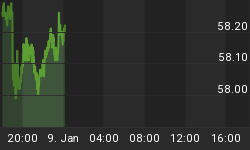Solar energy is no longer a cutting-edge technology. The public is well-acquainted with the sight of solar panels dotting the rooftops of their cities, and the sight is only becoming more common as the years go by. But while it’s not obvious to the average layperson, solar energy in in fact evolving and progressing rapidly right above our noses.
Currently, one of the most promising innovations flying under the radar in the world of solar panels is concentrated photovoltaics (CPV). This type of solar power is combines some of the best aspects of concentrated solar power and more flashy products like Tesla’s Solar Roof tiles but is a whole new way of harnessing the sun’s energy for the most efficient human use. Concentrated photovoltaics utilizes a combination of lenses and curved mirrors to focus the natural sunlight it gathers onto compact and extremely efficient multi-junction solar cells, and often comes equipped with solar trackers and a cooling system for an even more efficient and streamlined process.
Recently a research consortium called CPVMatch made public in a press release last month that its latest CPV solar module, an experimental model, achieved a conversion efficiency rate of 41.4 percent--an incredible achievement by all accounts. The innovation in this newest experimental module that has gained it such a high yield lies in the utilization of achromatic lenses which focus incoming rays of sunlight onto mini multi-junction solar cells. The efficiency is further buoyed throughout the day by a two-axis solar tracker.
While it is a major achievement to reach breakthrough levels of efficiency in the lab, however, the best isolated results in the world mean nothing if they can’t be materialized as commercial products with similar results at a reasonable price, able to compete in the solar market as a whole. This is not lost on the CPVMatch, who have an end goal of creating processes ready for mass production. Project leader Dr. Gerald Siefer of Fraunhofer ISE said in their recent press release, “In CPVMatch, we have addressed all production steps for concentrator modules starting from the materials, through cell fabrication and production systems, and up to the challenges facing module manufacturing.” Related: UK Suspends Top-Tier Investor Visas In Money Laundering Crackdown
CPVMatch is funded by the European Union and headed by Fraunhofer Institute of Solar Energy Research, a Germany-based group that is highly respected in their field. The researches of CPVMatch have reached this new breakthrough after being dedicated to the cause of getting CPV technology to the point of being production-ready for the past 3 and a half years. While the research consortium is based in Germany, it has brought together researchers and backing from Germany, Italy, Spain, and France.
While these researchers have made major headway with their project and are reaching ever nearer to their goal, we still shouldn’t expect to see concentrated photovoltaics modules popping up on rooftops near us in the very near future. While CPV still has a way to go to get out of its development stages, it is already well on its way to making a major impact to utility scale solar, as its high-efficiency results will most certainly not go unnoticed.
The impact of a project like this is also likely to make waves not only throughout Europe, but around the world, where the solar industry is rapidly expanding in places like Latin America and Asia. Even in the United States, where renewables are not currently the priority that they are in other major economies, the solar industry grew twelve times faster than the nation’s overall economy in 2015 alone. While solar power production has skyrocketed over the last five years, prices have plummeted, making the market more competitive than ever.
By Haley Zaremba for Oilprice.com
More Top Reads From Safehaven.com

















